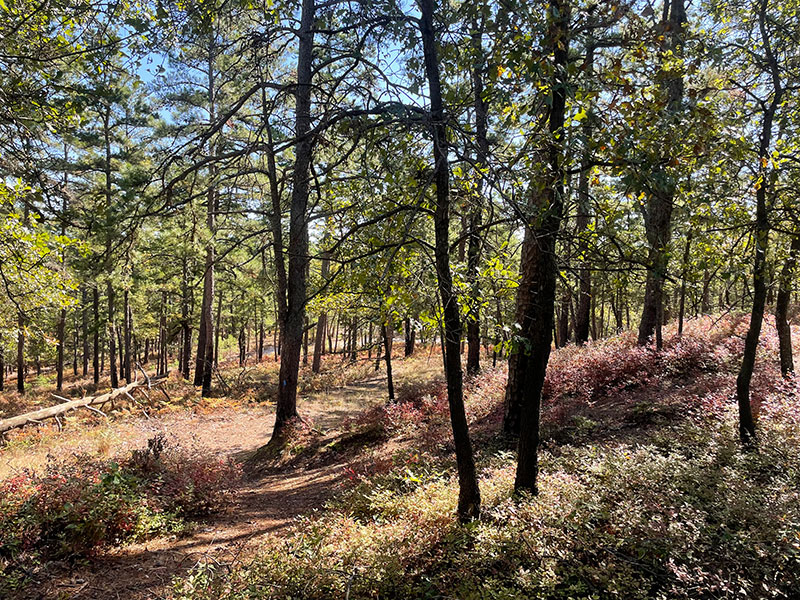
“Even though IU is only an hour and a half away from the New Jersey Pinelands, the animal and plant communities are completely different,” said Stephen C. Mason, Jr., Ph.D., assistant professor of biology.
This semester, Mason took students in his ecology class, a requirement for Immaculata’s new environmental science and ecology minor, on a field trip to explore the unique forests and wetlands found in the New Jersey Pinelands National Reserve. The region is the northern part of the world’s 36th global biodiversity hot spot. Biodiversity hot spots are areas with at least 1,500 endemic plant species that are found nowhere else on Earth and that have lost at least 70% of their natural range, due to human activity.
“I wanted to take students outside in the field not only because this is how many ecologists and conservation biologists conduct research, but also because I feel humans have lost their sense of wonder and all the physical and mental health benefits that being outside can bring—particularly during our technological age,” Mason remarked.
Alice Dougherty ’25, a biology major who participated in the field trip, reflected, “I was surprised by how different the environment was from other forests I’ve seen. Multiple times on the trip, I felt like I was in a different country. The grassy areas reminded me of the African savannah. The cedar bog felt like a sci-fi movie. The pygmy pine forest felt like Area 51. … It wasn’t until I actually went there that I realized how unique it truly is.”
Mason showed students a very visible transition between different forest habitats. Different tree species occupy these distinct habitats based on the elevation of the water table in the soil. Drier soils indicate a lower water table from the ground surface, while wet soils have a higher elevation relative to the ground surface. Pitch pine trees occur in the drier upland soils, black gums are in the transition zone, and Atlantic-white cedars are in the lowlands.
Exploring the bog where the Atlantic-white cedars lived was a favorite part of the trip for Mary Steinbicker ’26, a biology and secondary education major. “Picture gorgeous white cedars with grayish blue bark perched on top of a plot of land covered in luxurious moss. It was stunning, right out of a picture book, and it was so wonderful to experience such a rare habitat.”
Mason and his students also found carnivorous plants, such as pitcher plants and sundews, in the bog. The Pinelands have nutrient-poor soils, so these plants evolved to feed on insects for more nutrients the soils can’t provide.
Mason told students about an ongoing conservation project, led by one of his colleagues with the New Jersey Conservation Foundation, to determine the behavior, range and movement of the northern pine snake, Pituophis melanoleucus, a state-threatened species. Mason and his class were able to radio-track a five-foot-long northern pine snake to see where it was basking, and they enjoyed seeing and holding this rare species
“What a healthy and beautiful animal!” said Steinbicker. “It was so fascinating to observe its mannerisms and behavior as well as learn about its natural history.”
She and Dougherty appreciated learning about other unique species in the Pinelands that Mason pointed out to them, such as the pine barrens gentian, another globally rare species of flower. Dougherty noted that seeing and experiencing many different species in the wild made it easier for her to remember their names than reading about them in a book.
“I’m fascinated by the way different ecosystems support life on Earth, so getting the chance to explore a new environment was so fulfilling,” Steinbicker reflected. “I’m a firm believer in being a steward of the Earth, and in becoming a better steward by learning about as much as possible.”